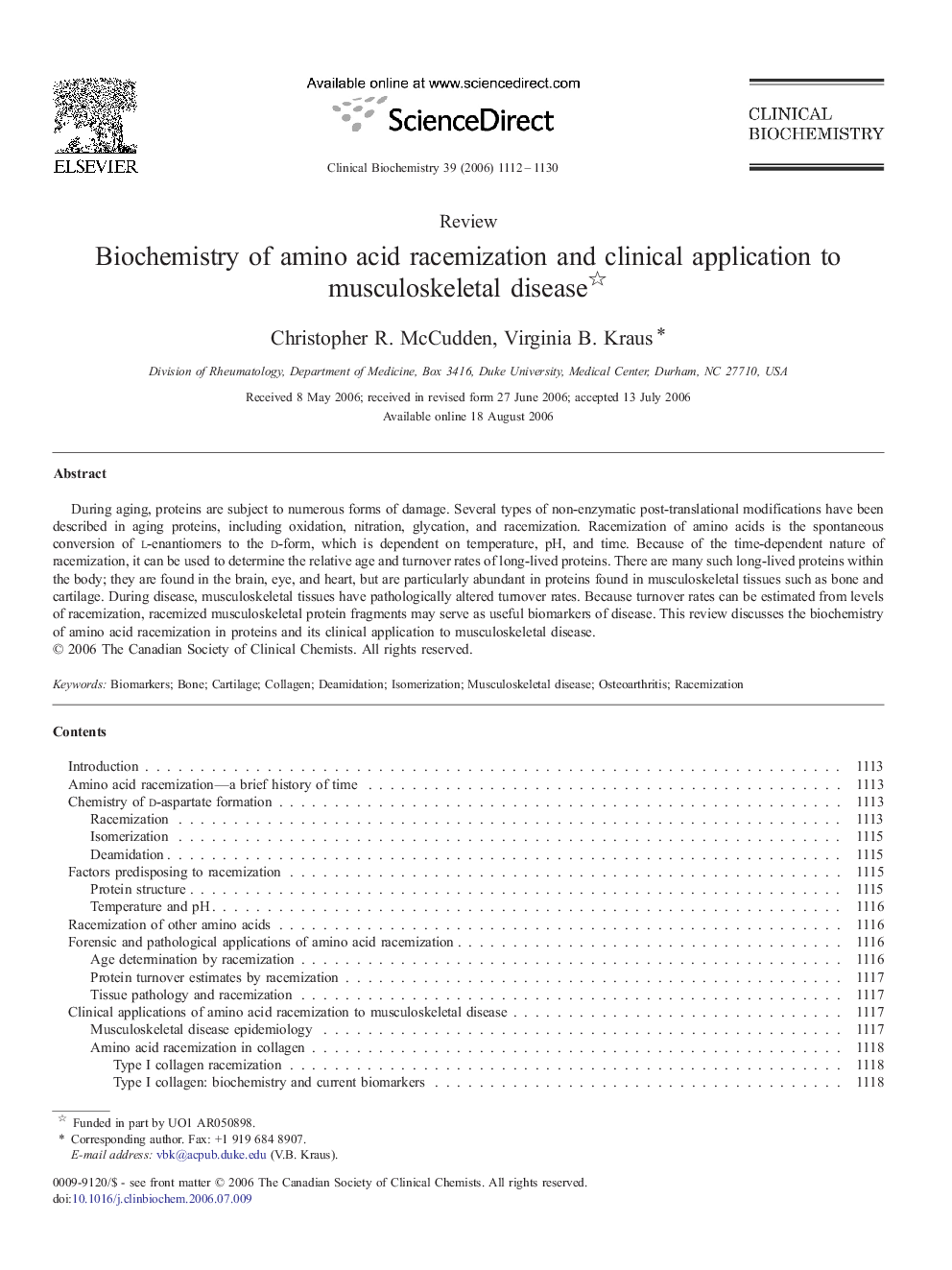| Article ID | Journal | Published Year | Pages | File Type |
|---|---|---|---|---|
| 1970606 | Clinical Biochemistry | 2006 | 19 Pages |
During aging, proteins are subject to numerous forms of damage. Several types of non-enzymatic post-translational modifications have been described in aging proteins, including oxidation, nitration, glycation, and racemization. Racemization of amino acids is the spontaneous conversion of l-enantiomers to the d-form, which is dependent on temperature, pH, and time. Because of the time-dependent nature of racemization, it can be used to determine the relative age and turnover rates of long-lived proteins. There are many such long-lived proteins within the body; they are found in the brain, eye, and heart, but are particularly abundant in proteins found in musculoskeletal tissues such as bone and cartilage. During disease, musculoskeletal tissues have pathologically altered turnover rates. Because turnover rates can be estimated from levels of racemization, racemized musculoskeletal protein fragments may serve as useful biomarkers of disease. This review discusses the biochemistry of amino acid racemization in proteins and its clinical application to musculoskeletal disease.
